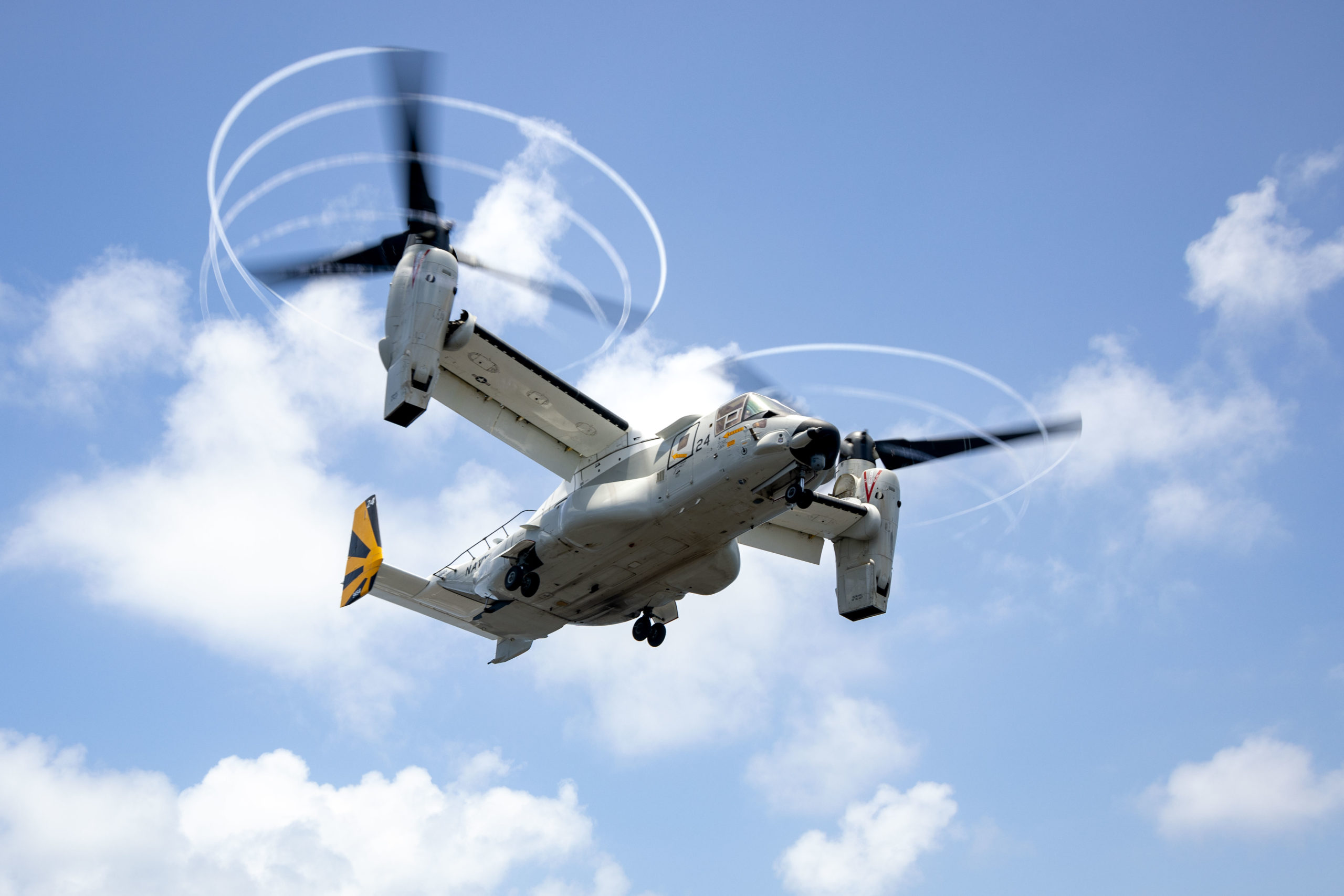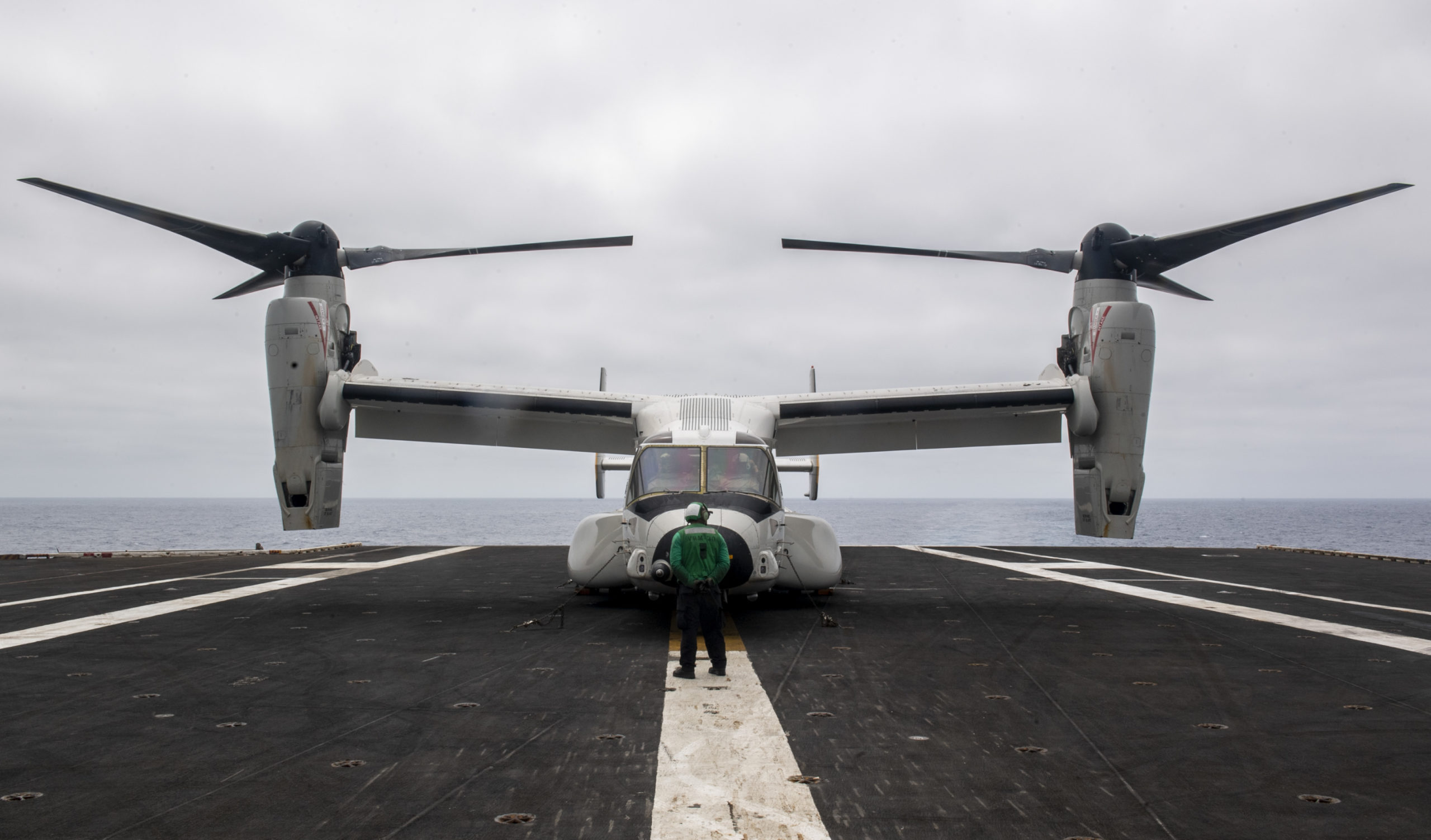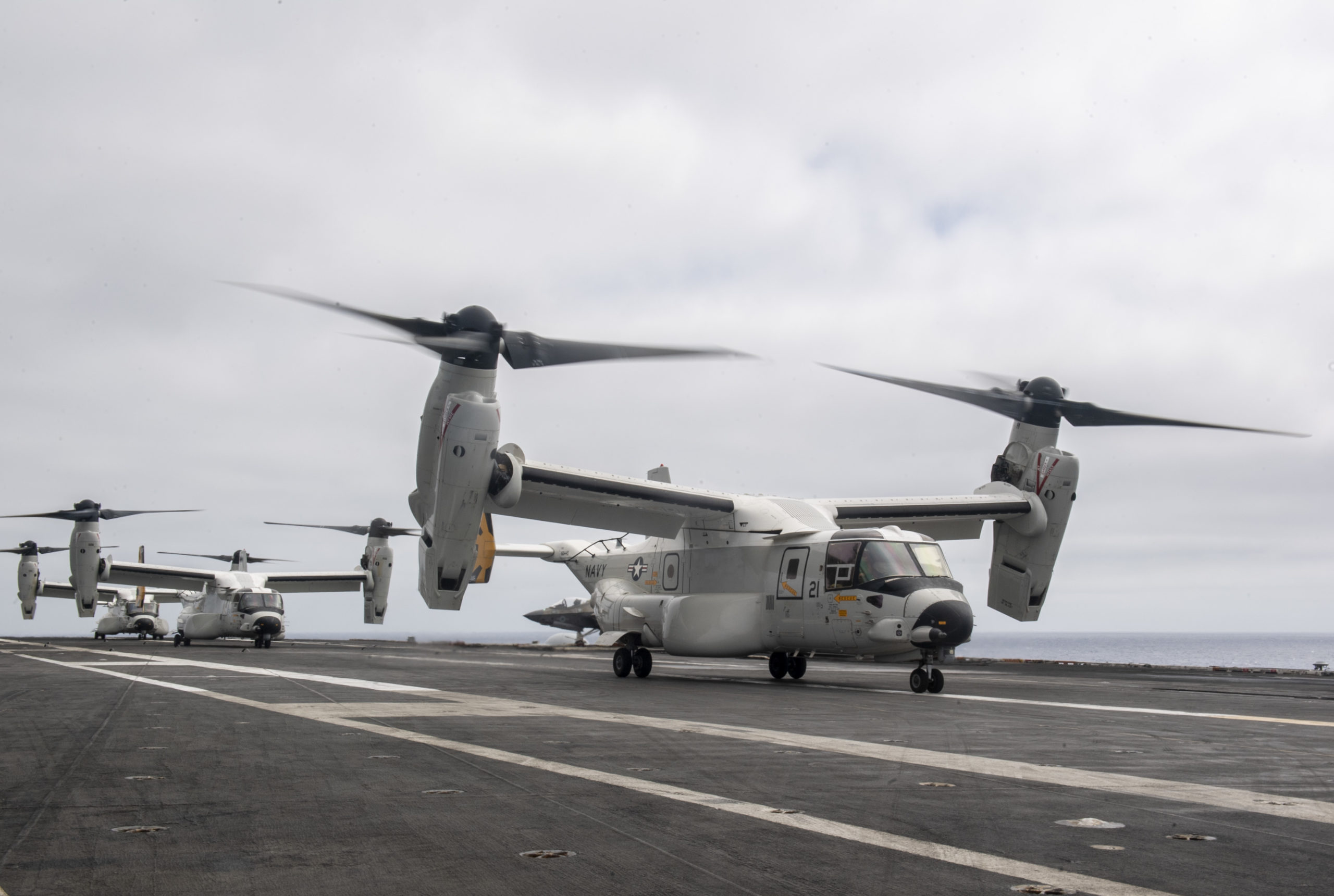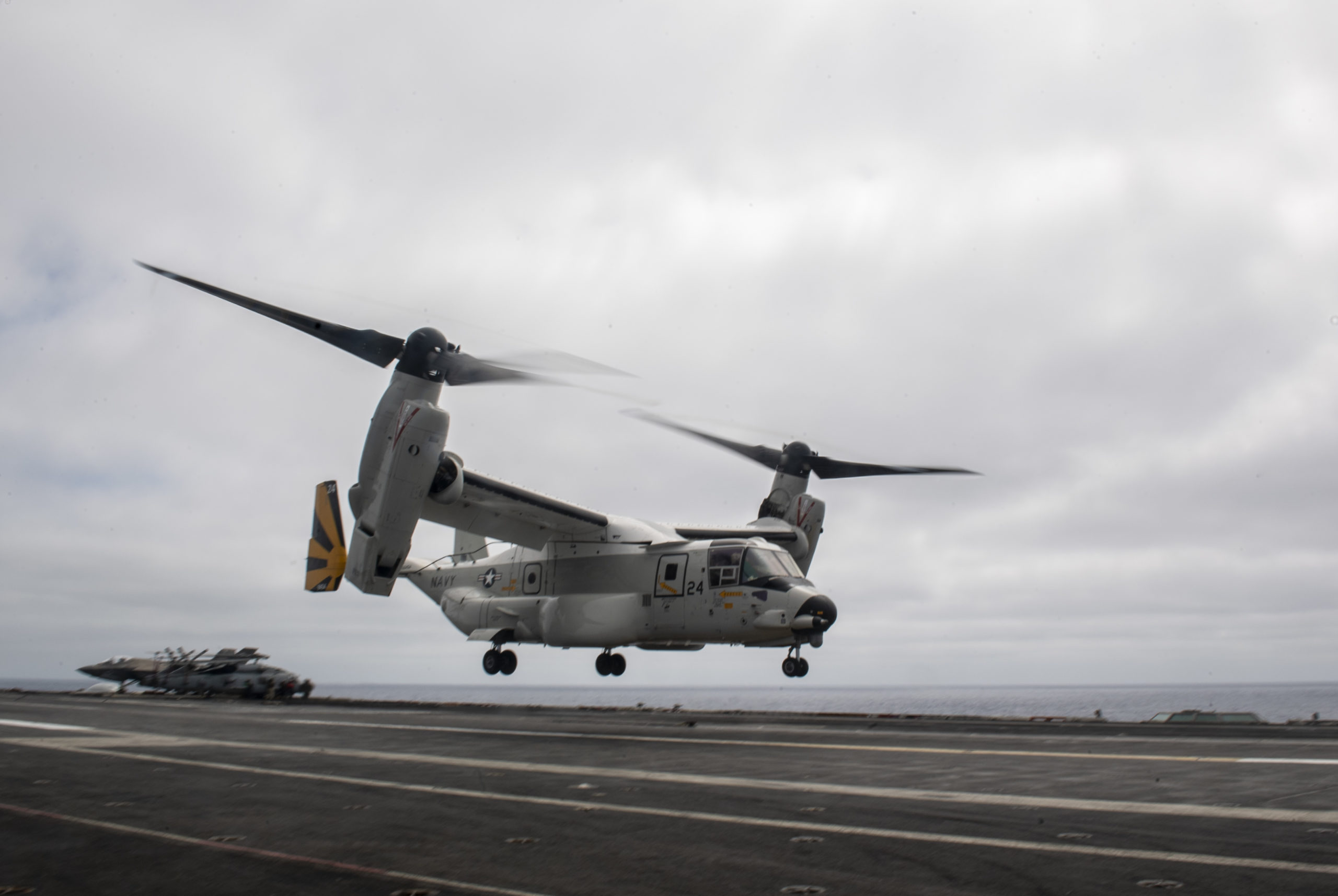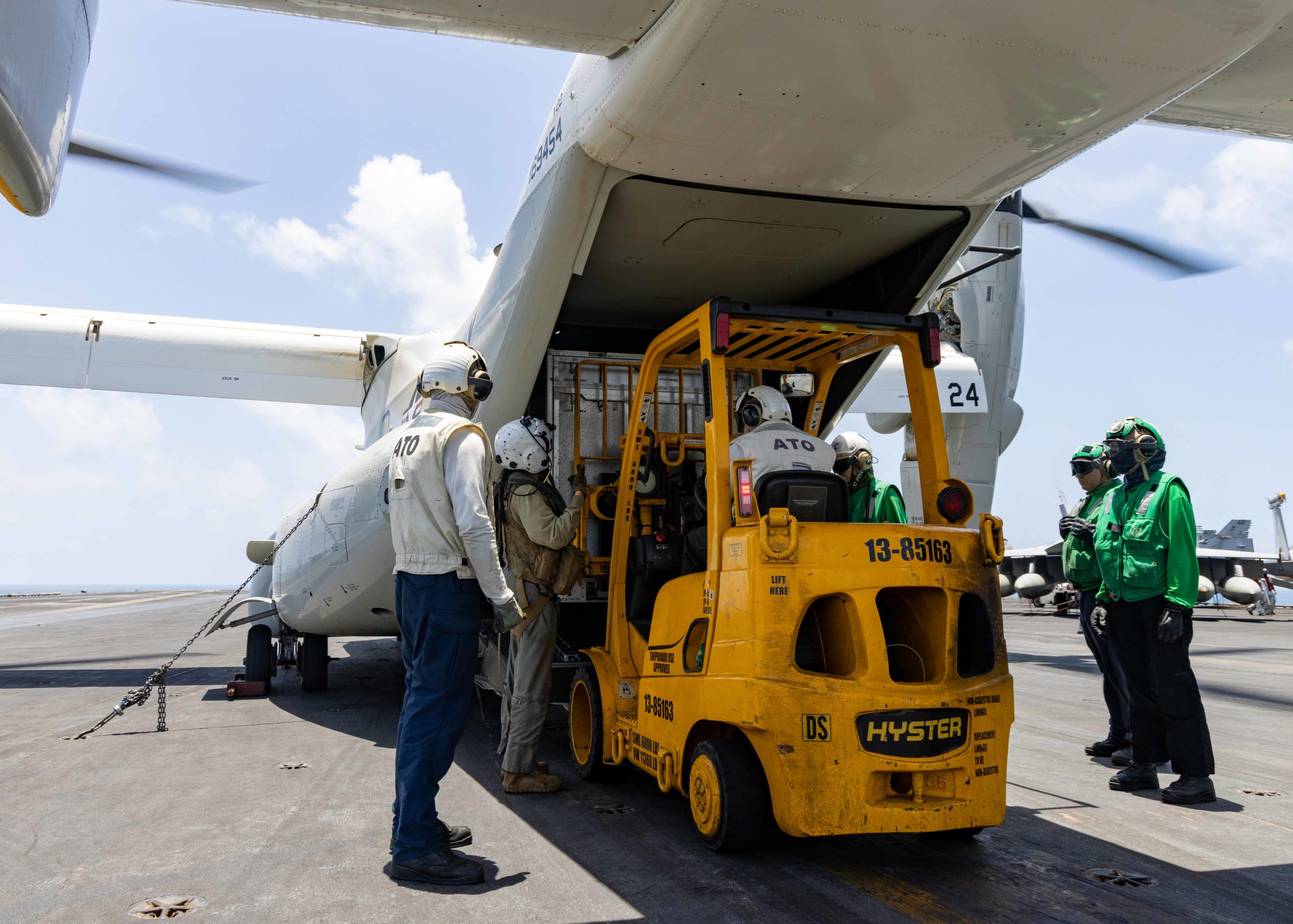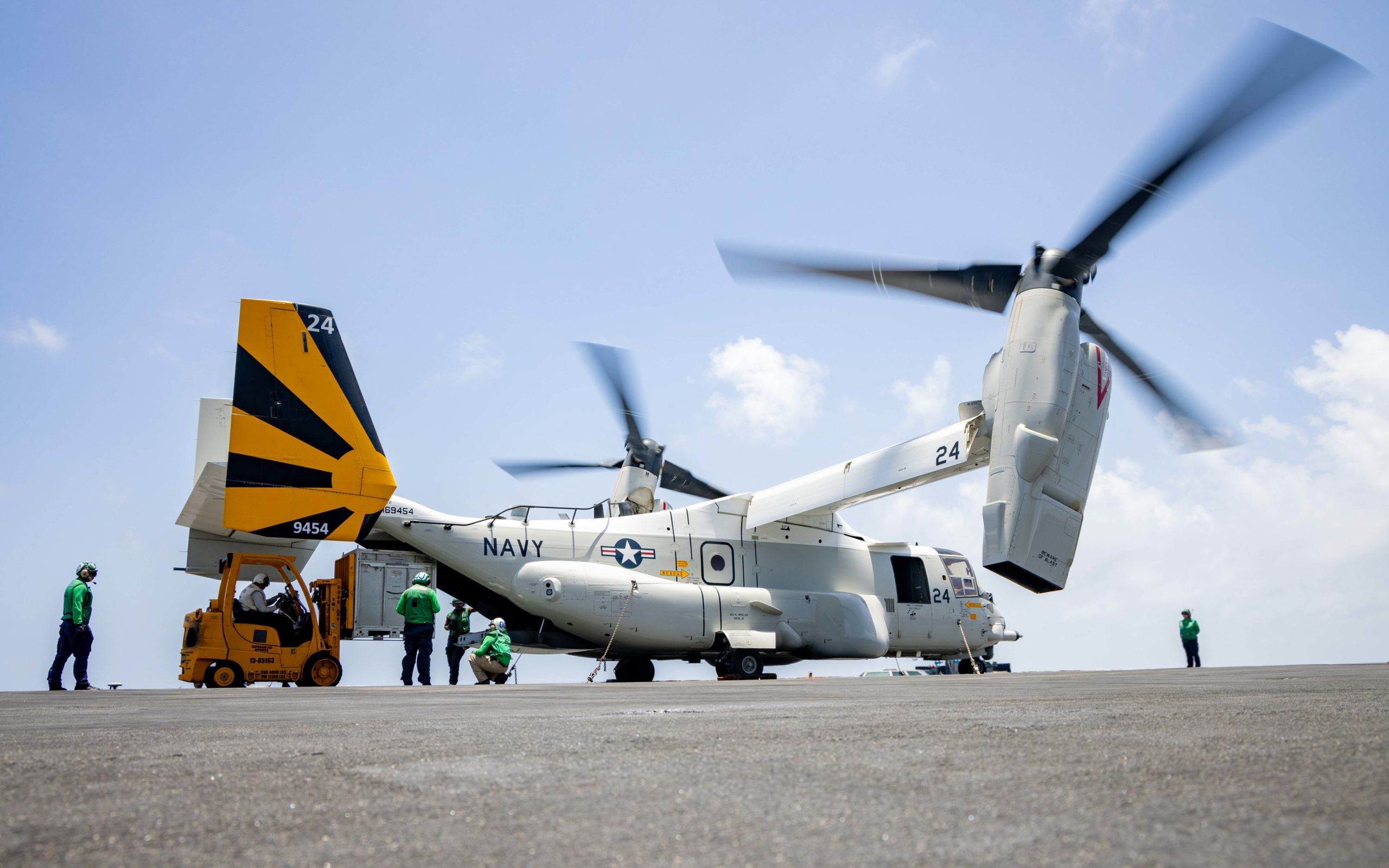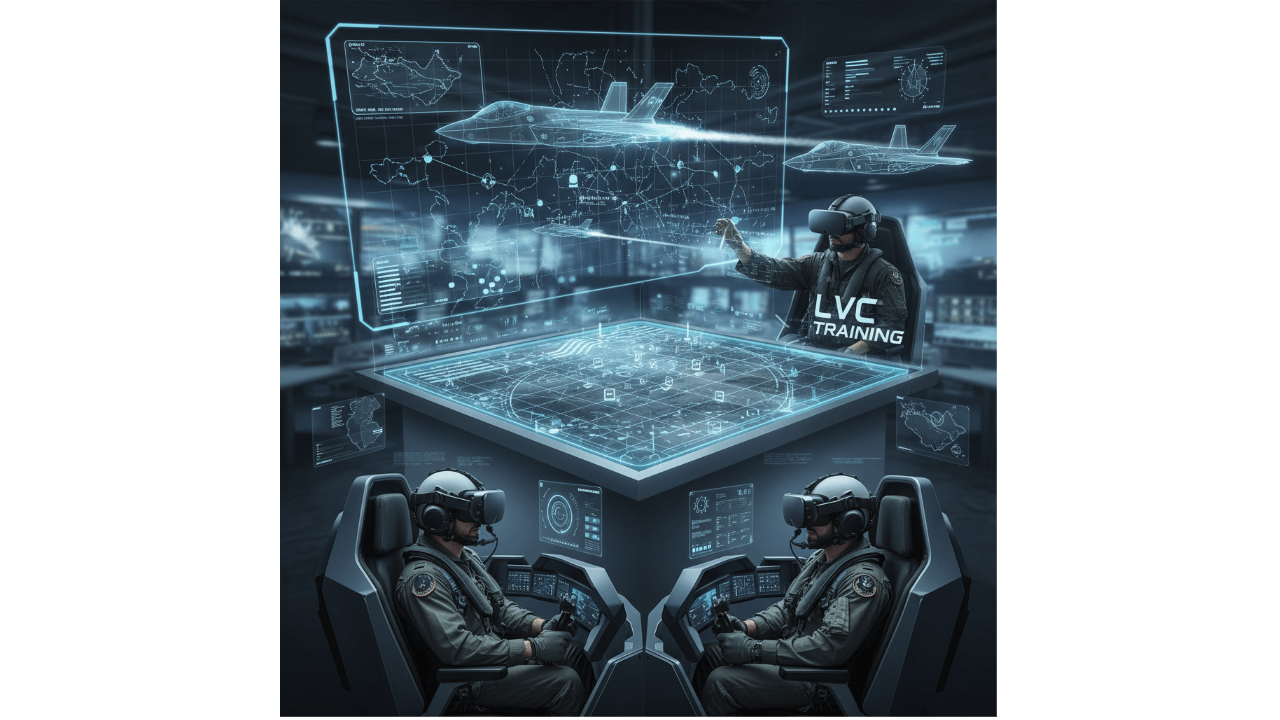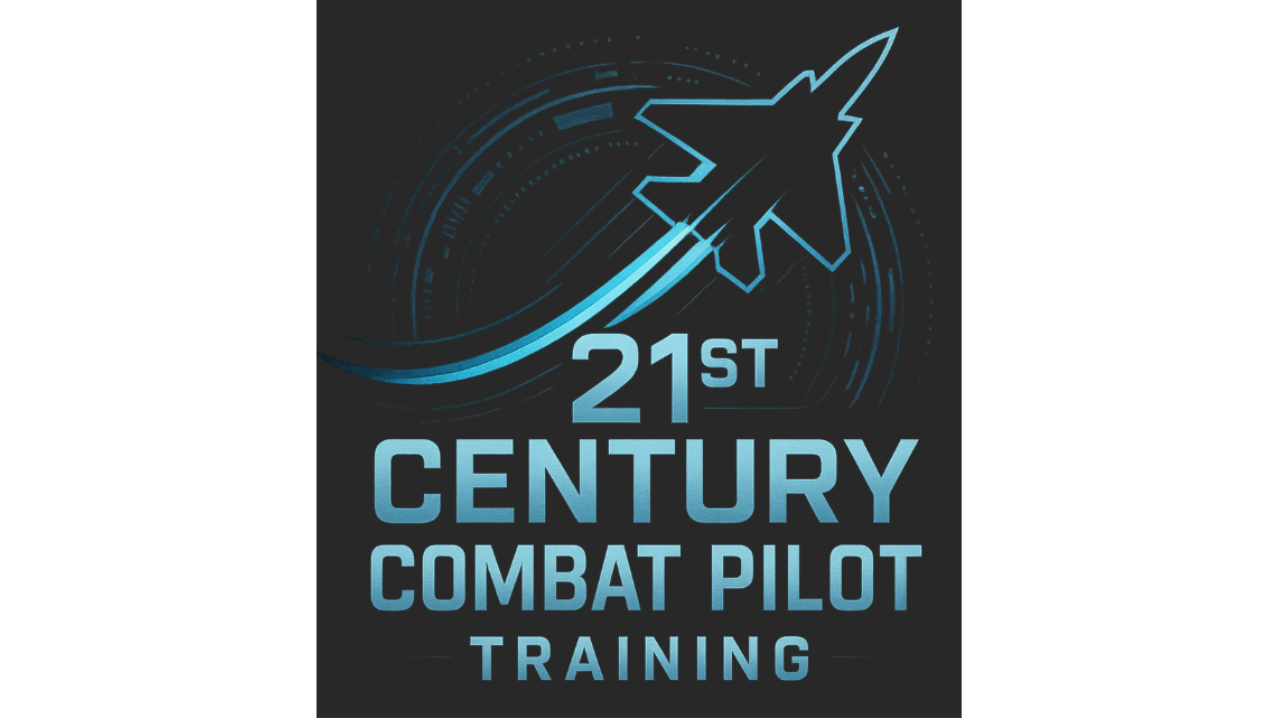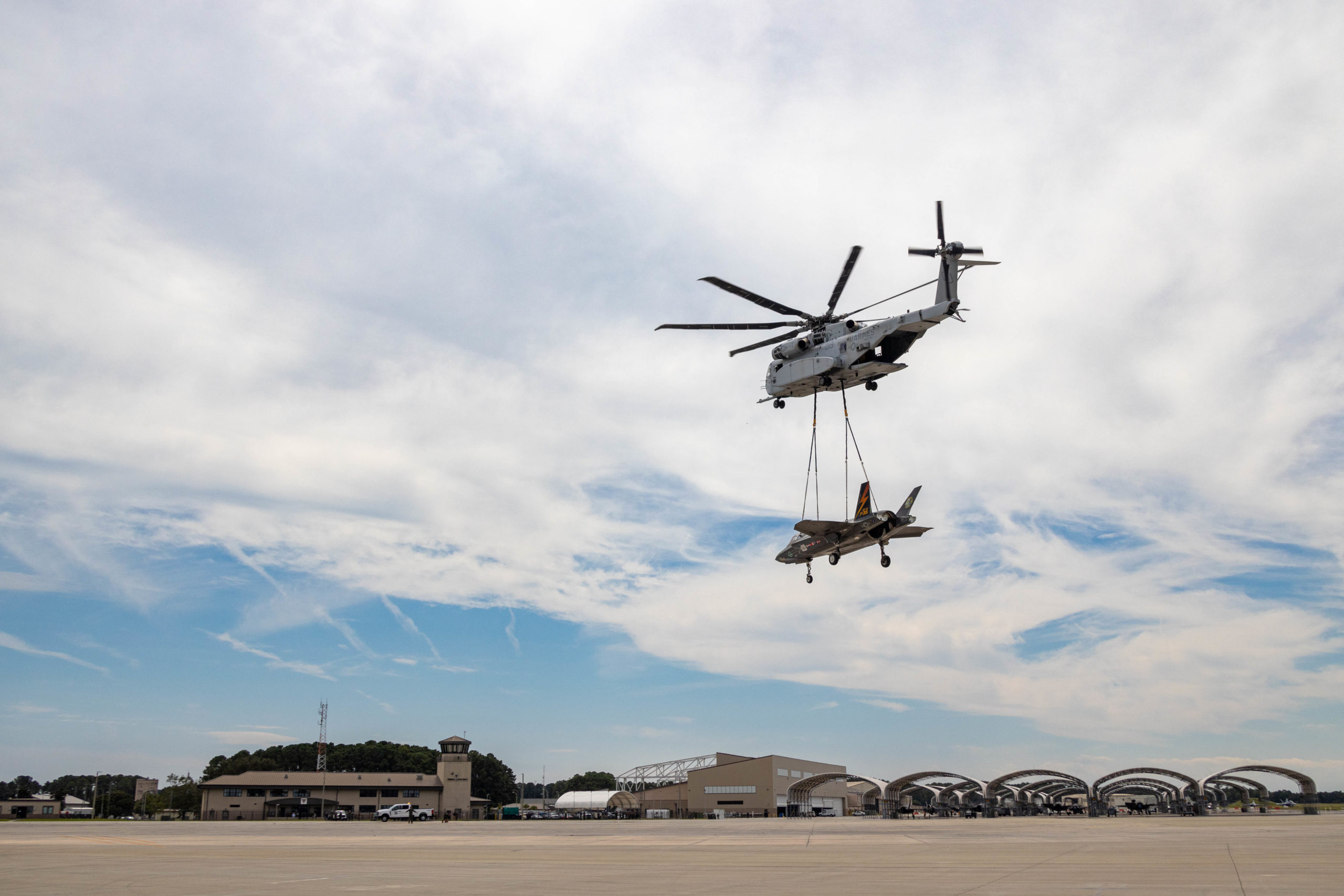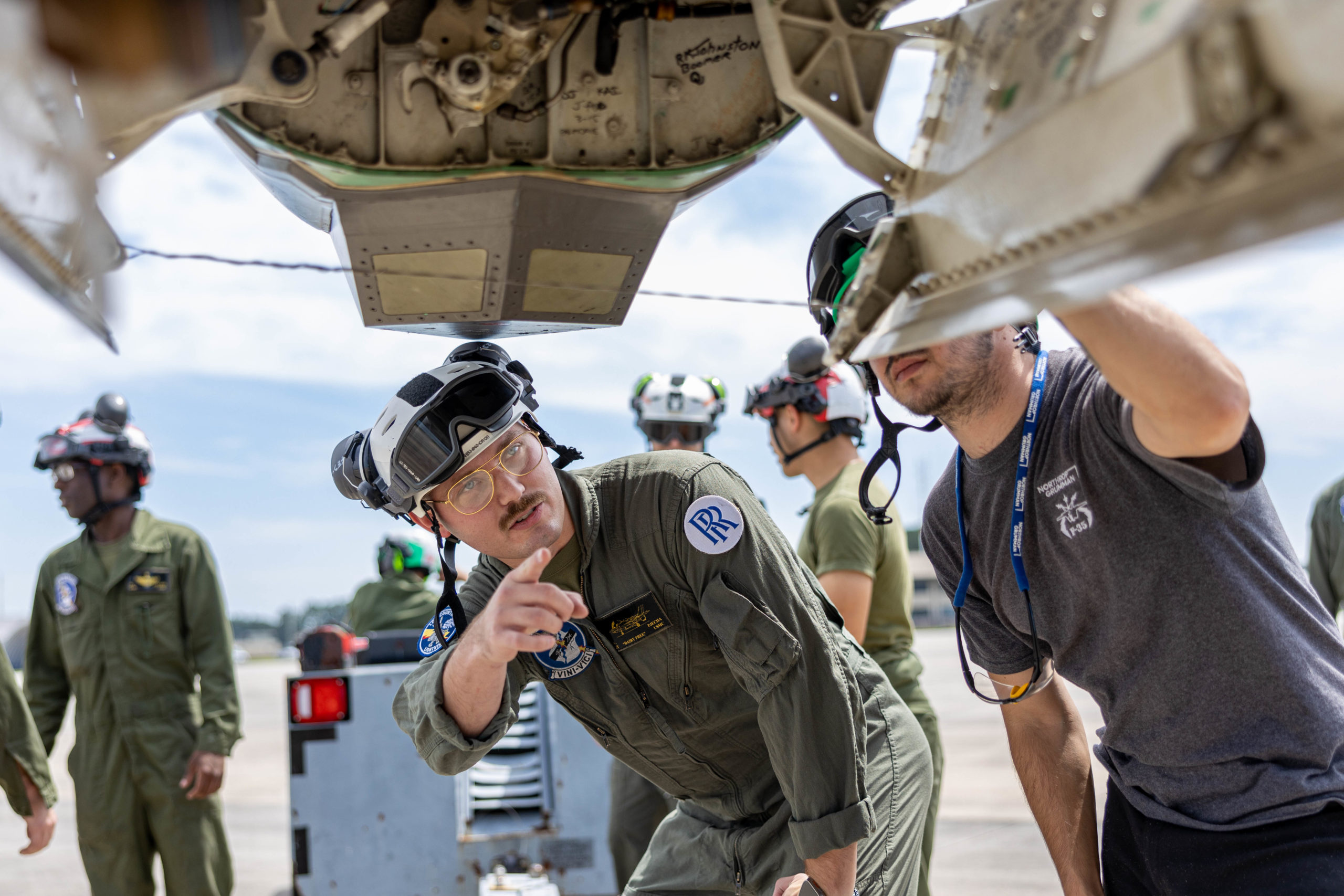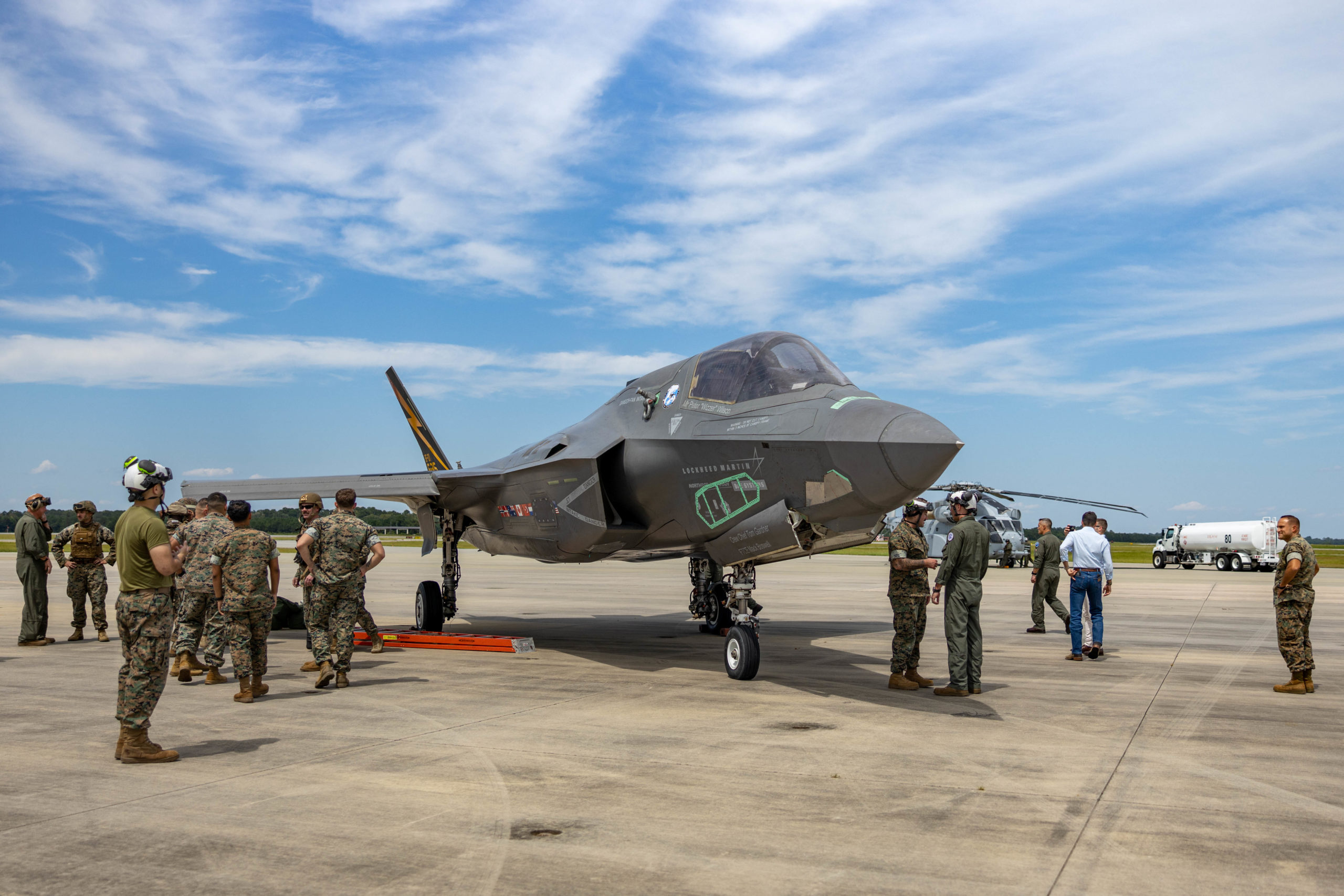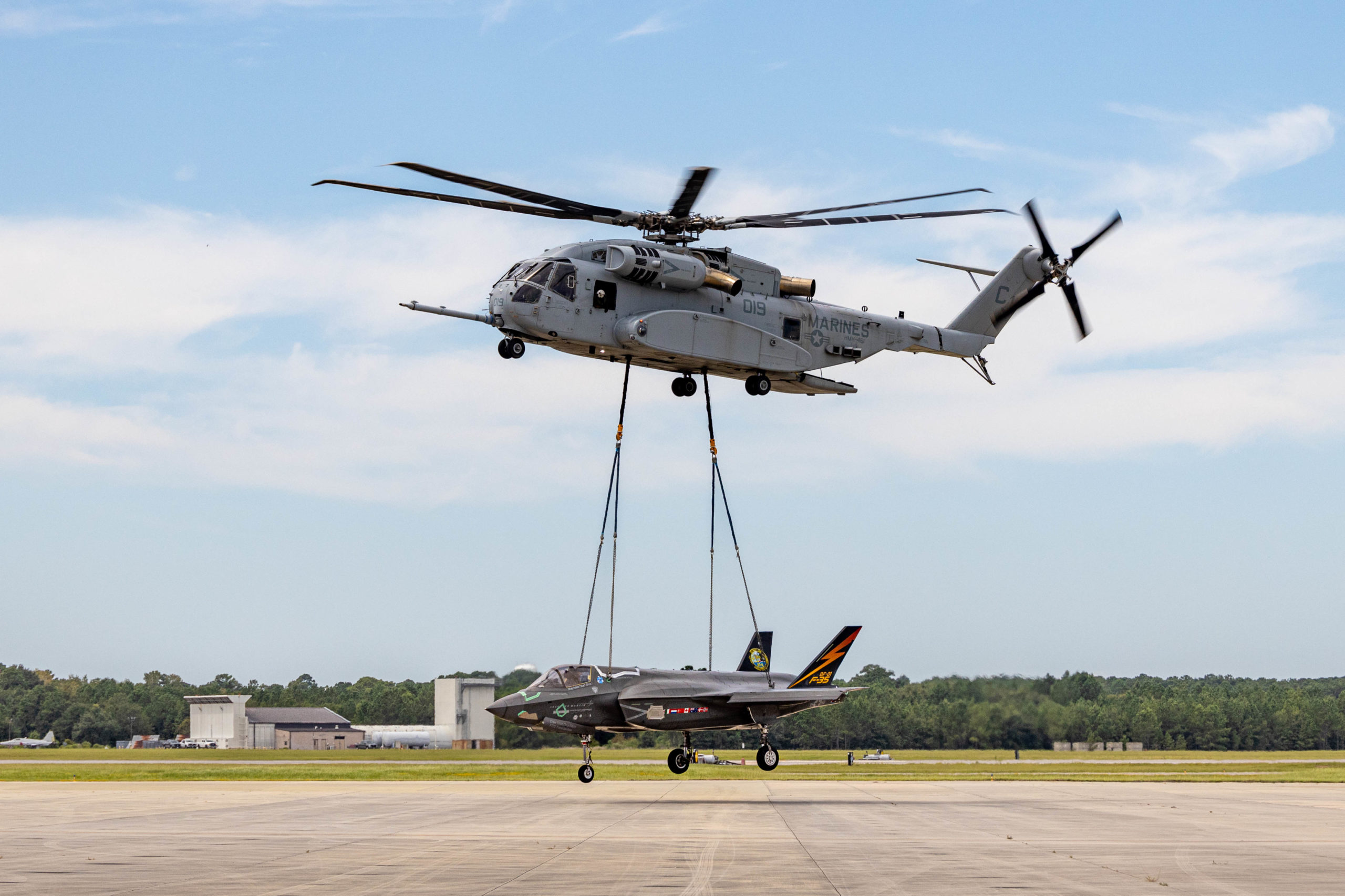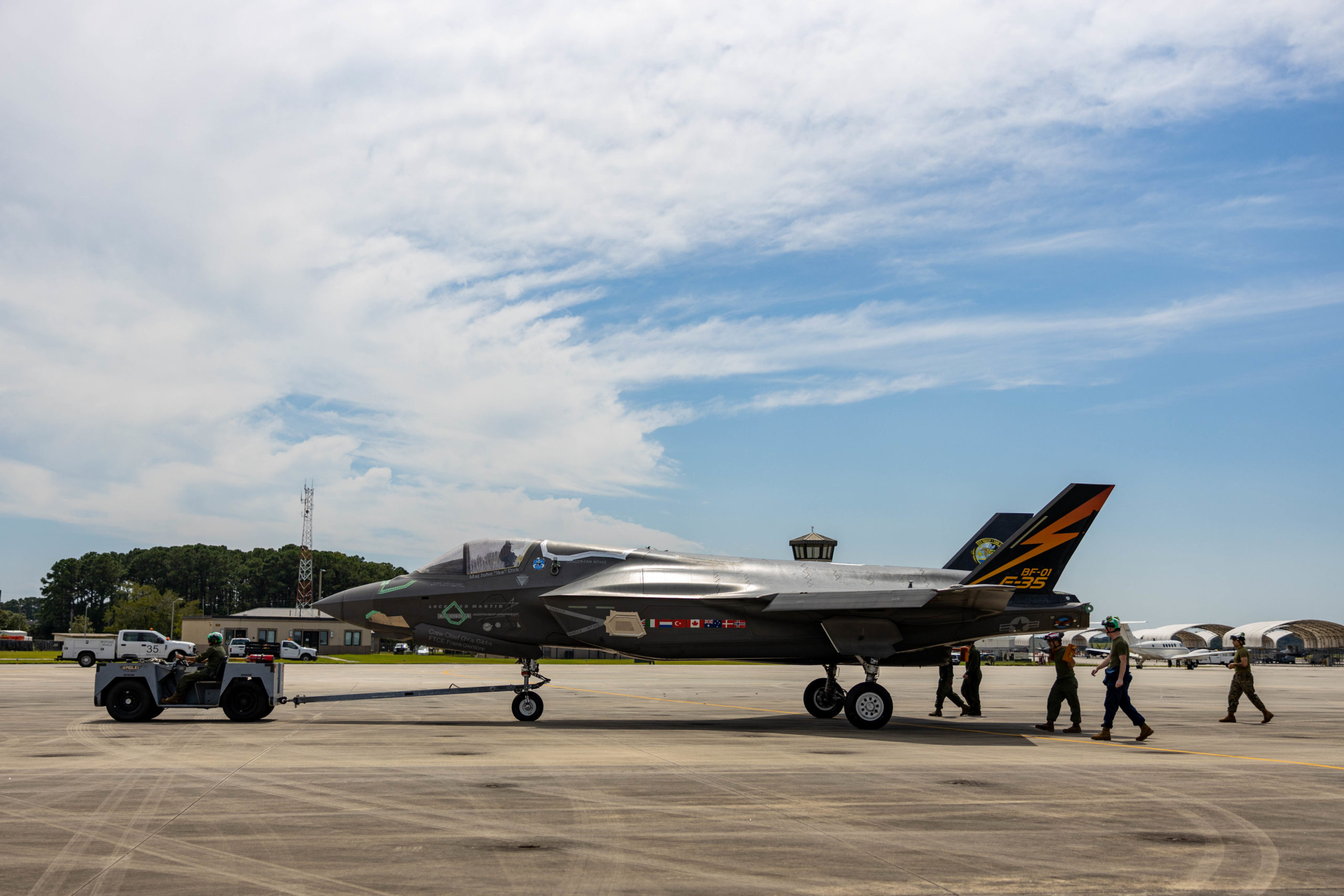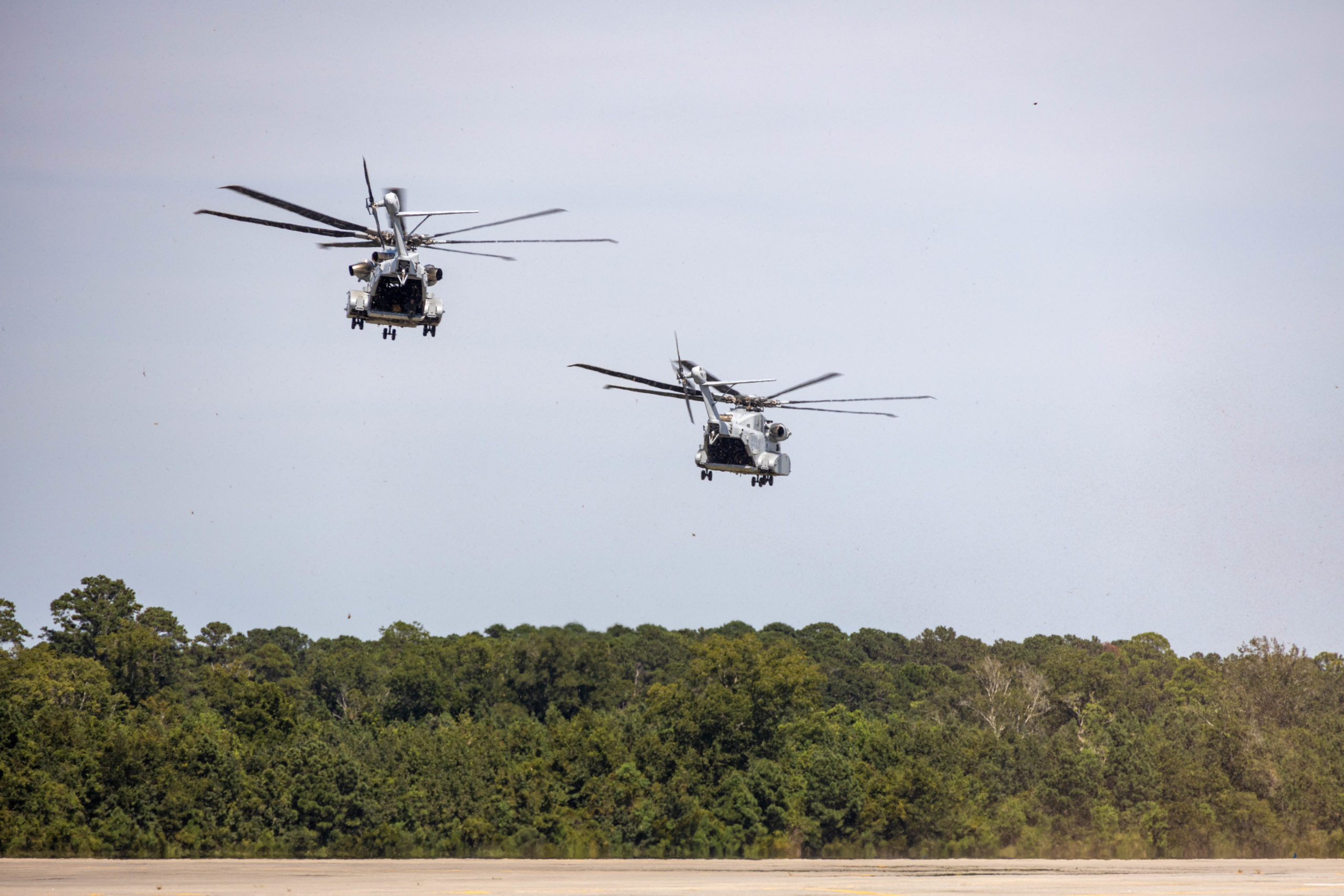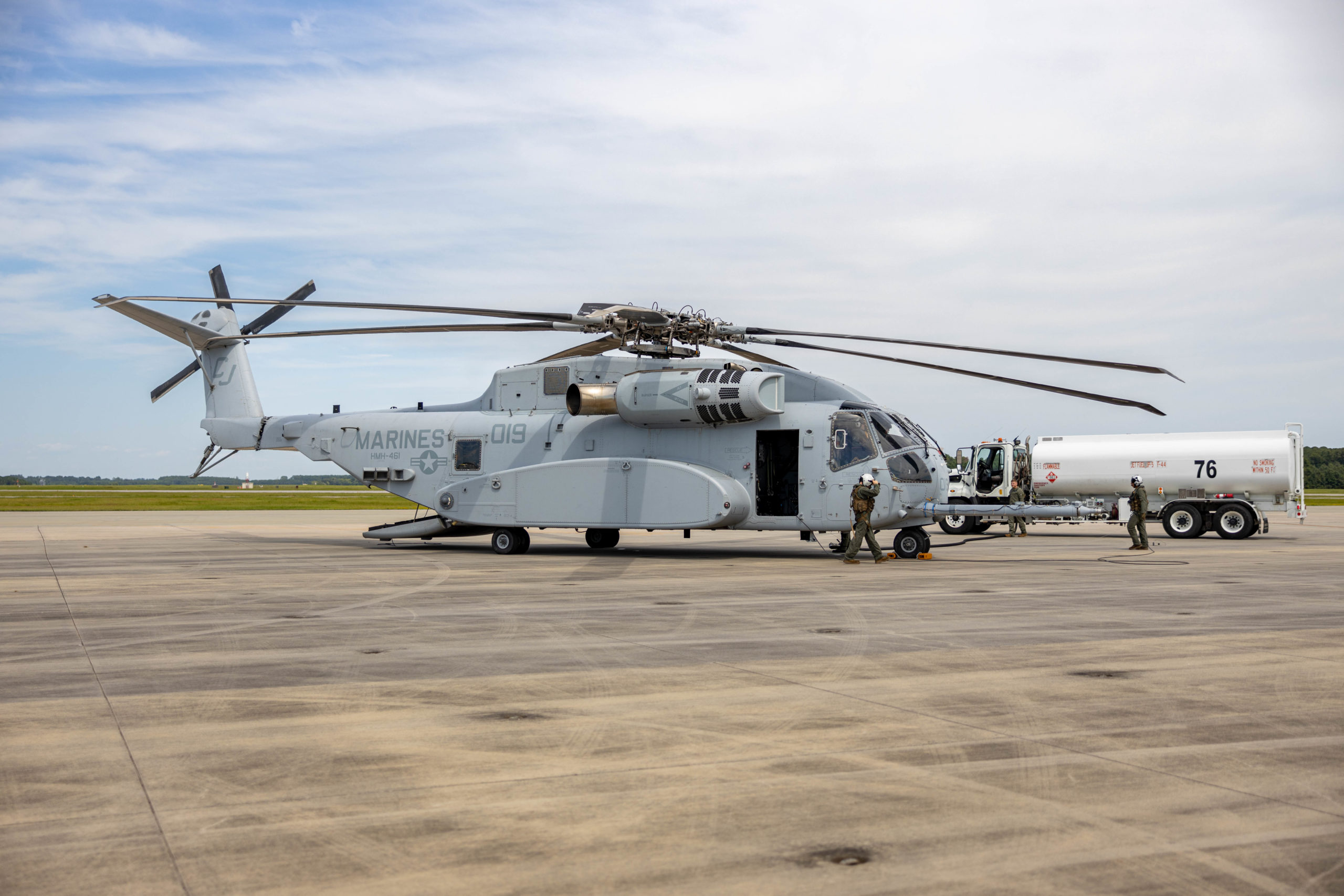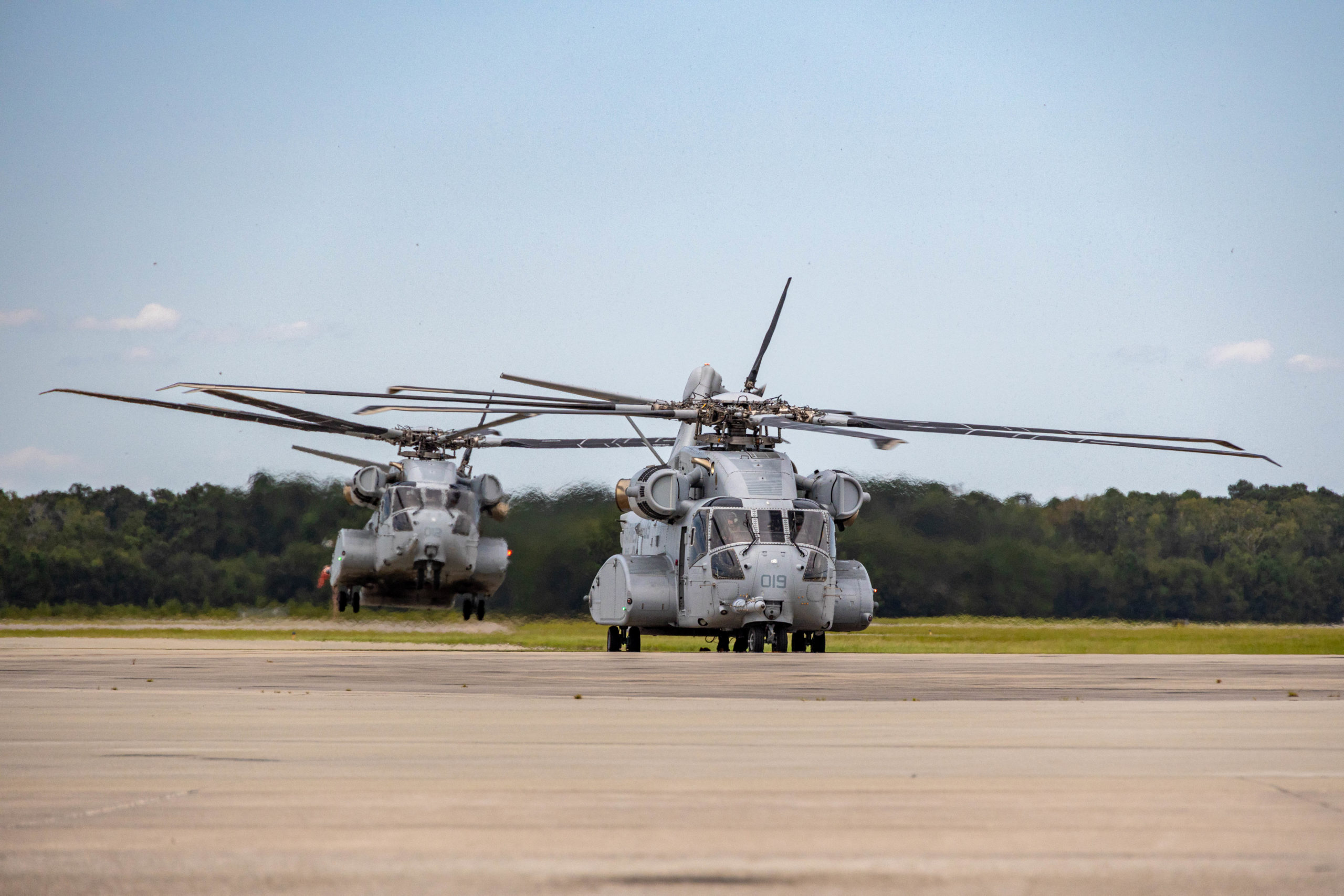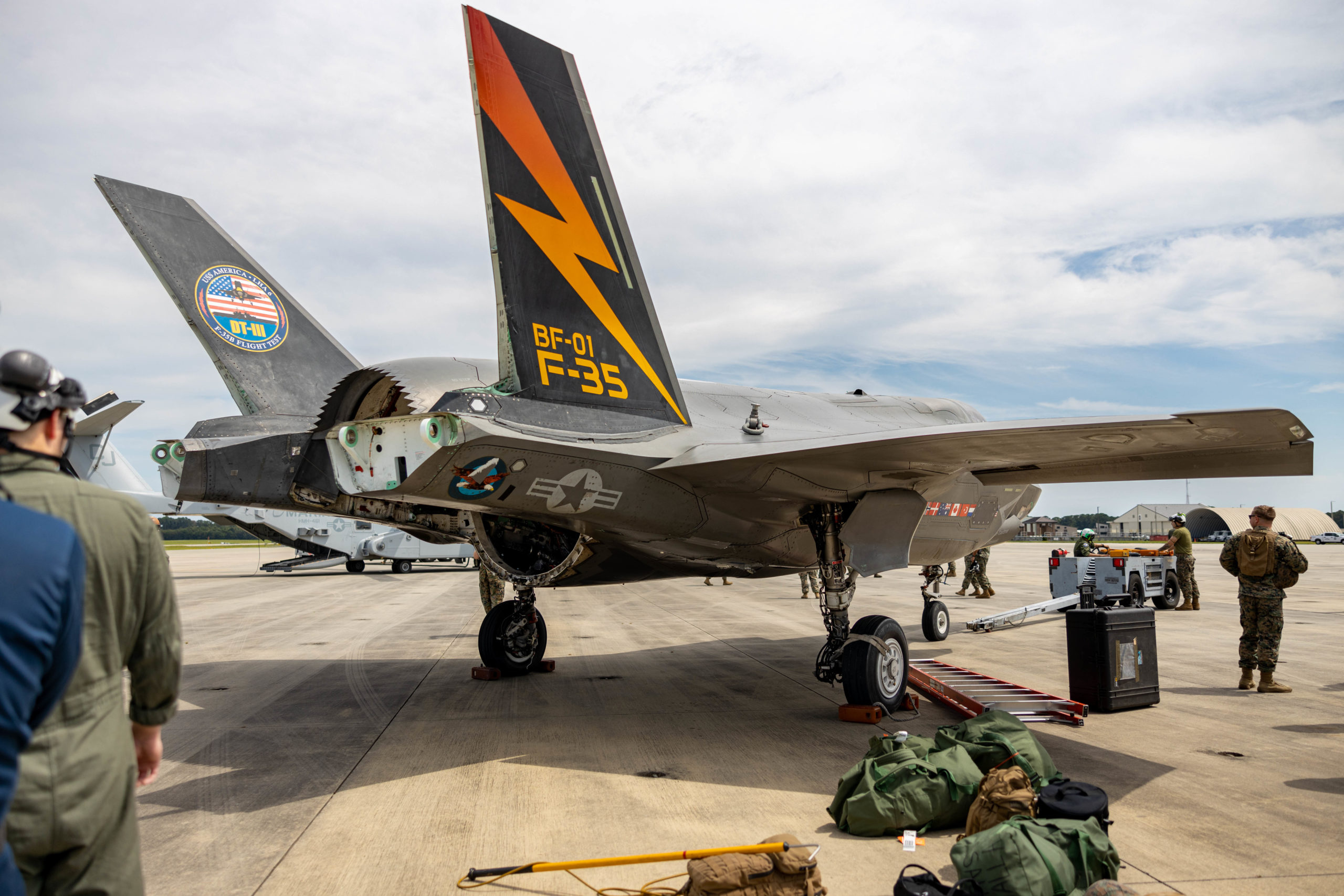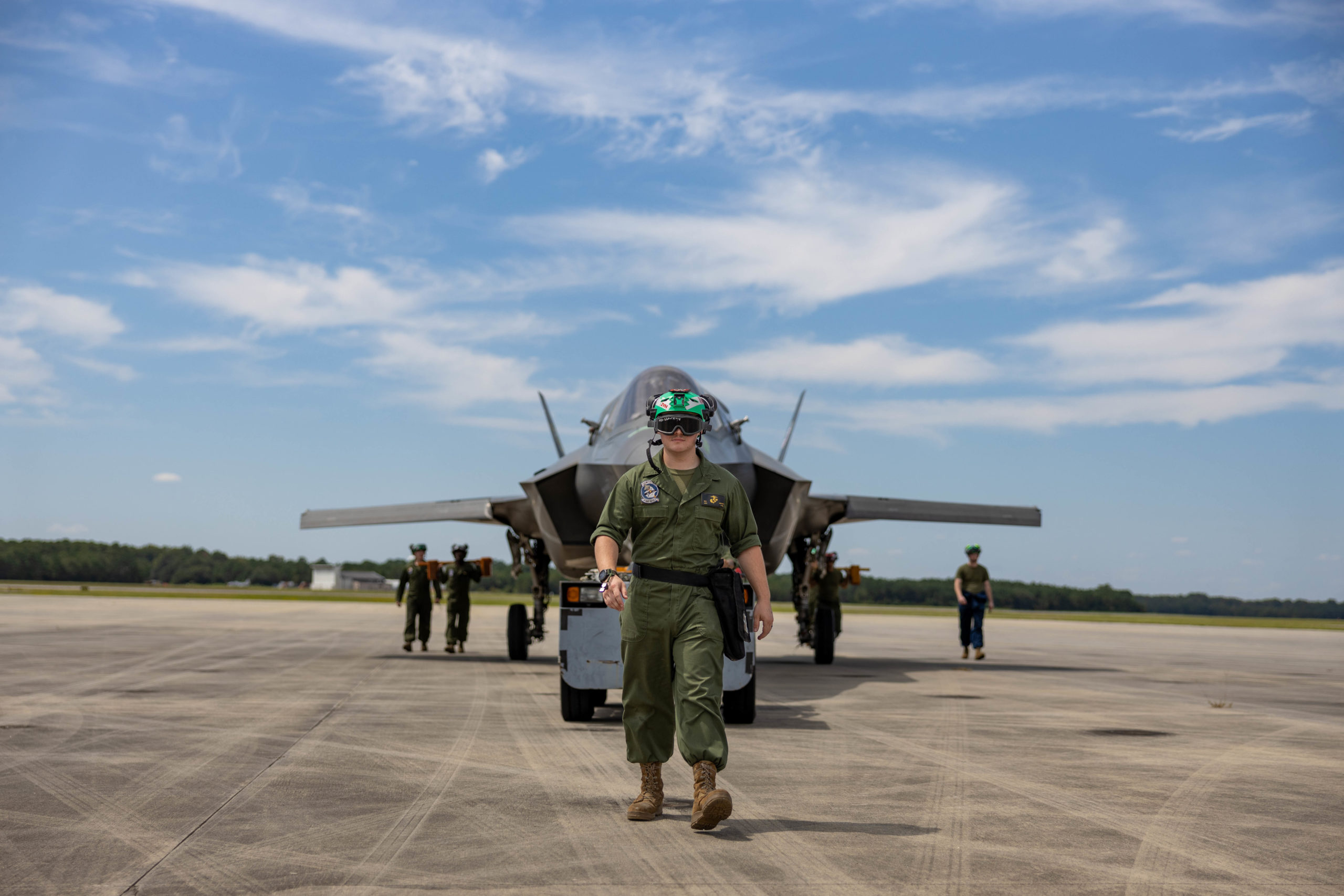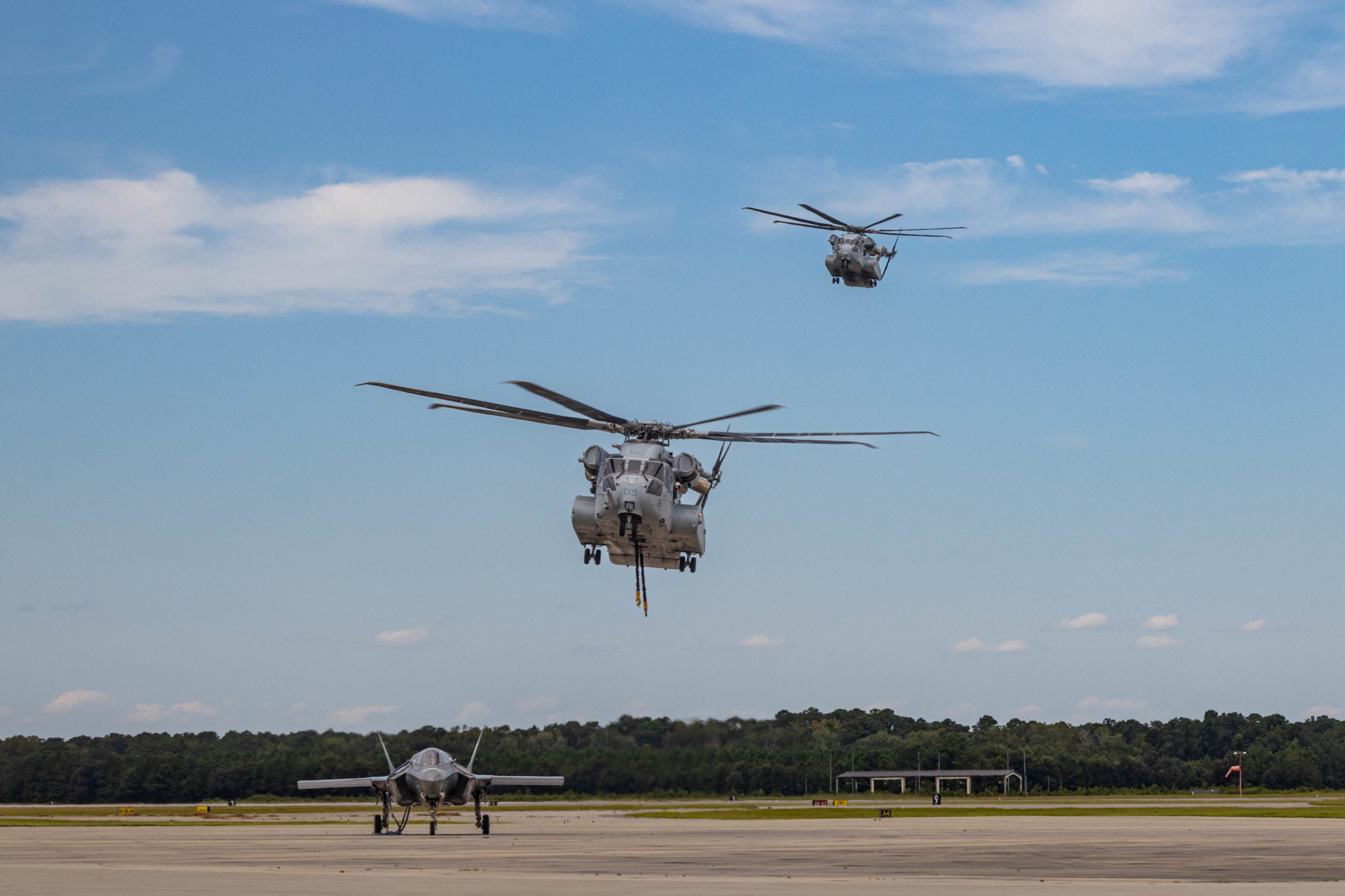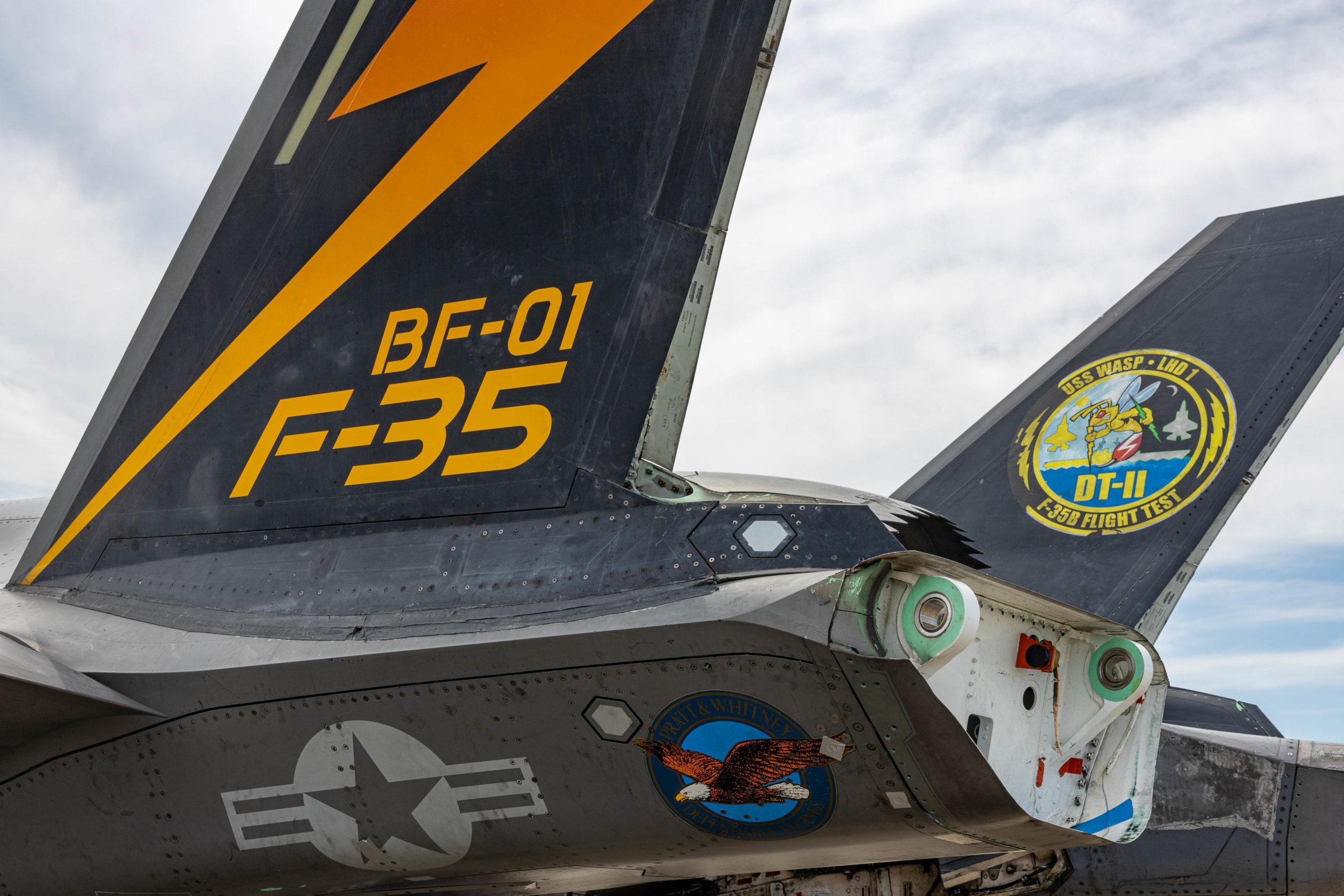In August 2025, Admiral Daryl Caudle assumed the role of the 34th Chief of Naval Operations, inheriting a U.S. Navy facing extraordinary pressures. From shipyard backlogs and workforce challenges to evolving threats in the Indo-Pacific, the service confronts demands that will test every aspect of its institutional capacity.
To mark this transition, the Center for International Maritime Security (CIMSEC) convened its “Notes to the New CNO“ series which is a collection of recommendations from naval officers, defense analysts, and maritime experts worldwide. The resulting contributions paint a comprehensive picture of the challenges ahead and offer concrete pathways toward solutions.
This article synthesizes the major themes and recommendations from this series, organizing them around five critical areas: institutional culture and reform, force structure and capabilities, warfighting development and readiness, strategic positioning and alliances, and the human dimension of naval power.
The Call for Radical Institutional Change
Perhaps the most urgent theme throughout the series is the need for fundamental cultural and institutional transformation. Lieutenant Chris Rielage’s contribution, “Sir, Be Radical,” sets this tone forcefully. Rielage argues that junior officers, those closest to tactics, closest to sailors, and least enculturated into Navy bureaucracy, overwhelmingly believe the current approach is insufficient for major power competition.
Rielage identifies a broken social contract: junior officers were encouraged to think innovatively about naval warfare, yet their ideas have rarely translated into meaningful institutional change. The result is a generation of officers who know promotion milestones but lack clarity on how the Navy will defeat China. This administrative obsession, Rielage argues, has created battlefield risk by prioritizing bureaucratic compliance over warfighting readiness.
Commander Paul Viscovich reinforces this critique in “The Foundry, Fleet, and Fighting Triad? Warfighting Focus,” comparing the Navy unfavorably to Naval Special Warfare communities. SEALs maintain laser focus on their mission by ruthlessly eliminating anything that doesn’t directly contribute to combat readiness. The conventional Navy, by contrast, has allowed eight decades without peer conflict to erode its warrior ethos, replacing it with an administratively-obsessed culture that conflates inspection performance with warfighting capability.
Viscovich’s prescription is direct: the CNO must cultivate a critical mass of reformers of independent-thinking junior admirals and captains willing to challenge calcified orthodoxy. He recommends establishing a blue-ribbon panel of retired officers, including SEALs expert in eliminating institutional bloat, to systematically cut non-essential programs. This approach recognizes that personnel policy drives organizational culture, and that sustained reform requires champions at multiple levels who can outlast any single CNO’s tenure.
Captain John Cordle’s “We Are At Risk of Forgetting the Lessons of the 2017 Collisions” provides sobering context for why institutional reform matters. The 2017 collisions that killed 17 sailors prompted the Comprehensive Review, which generated 112 corrective actions addressing fatigue, human-centered design, and the “can-do” attitude that had normalized dangerous practices.
Yet recent Class A mishaps suggest these reforms may not have taken root. Human Factors positions in the Surface Force remain vacant due to hiring freezes, essentially “unchecking the block” on key recommendations. Cordle warns that organizational drift toward failure remains constant, and that only sustained critical self-assessment prevents tragedy. His message to the CNO is clear: read complete mishap reports, not just summaries, and conduct holistic examination of whether reforms actually worked.
Reimagining Force Structure and Capabilities
The series features extensive debate about the platforms and capabilities the Navy needs for future conflict. Dmitry Filipoff’s “Fix the Navy’s Flawed System of Warfighting Development” provides essential context by arguing that 30 years of post-Cold War experience created fundamental atrophy in high-end warfighting skills. The Navy’s combat training program trained one warfare area at a time against opposition deliberately made to lose, producing certified forces whose actual readiness for great power war remained distorted by institutional pressure to meet deployment schedules.
This tactical literacy deficit undermines nearly everything else, Filipoff argues, because “almost everything the Navy does boils down to its tactical warfighting implications.” Without understanding the logic of how fleets are destroyed in combat, sound decisions about force structure, operational concepts, or personnel policy become nearly impossible.
Against this backdrop, several contributors address specific capability gaps. Dr. Shelley Gallup and Ben DiDonato make the case for small, lightly-manned warships in “Start Building Small Warships.” They argue that while submarines and naval aviation remain world-class, the surface fleet faces serious challenges.
The solution is not more large, expensive platforms but smaller, well-armed vessels that can provide persistent presence, reduce logistics burdens through greater endurance, and bring smaller shipyards into the industrial base. Their Lightly Manned Automated Combat Capability (LMACC) design envisions a crew of approximately 25 operating alongside unmanned systems, with commanding opportunities for O-3s that develop leadership earlier in officers’ careers. At under $200 million per platform, such vessels could be built in meaningful numbers to address China’s maritime militia while freeing destroyers for higher-end missions.
Dr. Craig Koerner takes a different approach in “A Navy for War in the Age of Intelligent Missiles,” arguing that the era of smart platforms delivering short-range weapons is ending. Modern missiles with capable seekers can penetrate defenses more effectively than aircraft, and at lower cost.
This shift demands moving from platform-centric to missile-centric operations, with long-range weapons launched from low-signature vehicles that never see their targets. Koerner emphasizes that survivable reconnaissance becomes paramount, satellites with improved resilience through large constellations, expendable drones, and specialized reconnaissance forces hidden in clutter. Unable to hide, conventional air and sea-surface platforms face grim prospects against competent opponents equipped with modern ISR and long-range fires.
Nicholas Weising’s “Anchor Acquisition and Force Development on Targeting China’s C4ISR” bridges platform debates by arguing that neutralizing Chinese command, control, communications, computers, intelligence, surveillance, and reconnaissance should serve as the organizing principle for Navy development. China’s anti-access/area denial strategy depends fundamentally on its C4ISR architecture or its ability to find and target U.S. forces.
The CNO should therefore prioritize layered approaches that target hostile sensing while reinforcing friendly networks, scaling up electronic warfare and cyber teams, investing in resilient communication architectures, and developing deception methods to complicate enemy targeting. This focus ensures that force structure debates remain grounded in the operational problem: defeating China’s kill chains before they can be executed.
Warfighting Development and Readiness
The series dedicates substantial attention to how the Navy trains, educates, and prepares its forces. Captain Paul Nickell’s “To Win the Fight, We Must First Win the Mind: Create NDP-1.1 Naval Warfighting” identifies a critical gap. The Navy possesses abundant technical manuals but lacks unifying warfighting philosophy that helps sailors think through friction, fluidity, and ambiguity inherent in combat.
Modeled on the Marine Corps’ transformative MCDP-1 Warfighting, Nickell proposes NDP-1.1 as a companion to existing doctrine. This publication should articulate clear philosophy valuing initiative and adaptation, provide strong conceptual foundations about the nature of naval warfare, and elevate leadership and decision-making as core competencies. Critically, publication alone is insufficient for the document must be integrated into curriculum, training, and fleet culture from accession to flag rank.
Commander Michael Posey’s “Accelerate Human-Machine Teaming in the Maritime Operations Center” addresses the technological dimension of readiness. Maritime Operations Centers serve as decision hubs for numbered fleets, integrating intelligence, operations, and logistics at scale. With the Navy fighting from seabed to space and through the electromagnetic spectrum, the volume of data demands AI-enhanced tools that augment rather than replace human judgment.
Posey emphasizes that AI literacy must be built in the Foundry, through education at Naval Postgraduate School, Maritime Warfighting Courses, and Fleet Tactical Training Groups. Watchstanders must arrive prepared to operate in vast, volatile, contested maritime domains that demand machine teaming, understanding both AI’s force-multiplying potential and its limitations in bias, contextual failures, and misinterpretation.
Captain Alan Brechbill takes a more specific focus in “Sink the Kill Chain: A Navy Space Guide to Protecting Ships and Sailors,” arguing that the next war at sea will be decided first in space. Ships operating inside lethal weapons engagement zones cannot survive China’s massed precision fires unless the Navy treats space operations and Counter-C5ISRT as foundational rather than auxiliary.
Brechbill outlines five lines of effort: treating space as a warfighting domain owned by trained sailors rather than outsourced to the Space Force; making Counter-C5ISRT the Navy’s first layer of defense; building platforms designed to operate when space enablers are degraded; training the fleet to disappear through emissions control and deception; and investing in dedicated Navy Space operators with the same rigor given aviators and submariners. His central argument is stark: a fleet that cannot hide cannot fight, and breaking the enemy’s kill chain is the Navy’s main line of defense.
Lieutenant Andrew Pfau and Bridger Smith address training gaps for submarine forces in “The Submarine Force Needs More Flexible Training Tools.” Shore-based attack centers provide high-fidelity training but are limited in number, leaving shipyard crews, often weeks between opportunities, struggling to maintain readiness. Their solution involves “attack center in a box” trainers: lower-fidelity, modular systems running on basic laptops that link tactical watchstanders in shared training environments. These would not replace shore trainers but provide higher training density and frequency. Combined with tabletop wargames for tactical decision-making, such approaches offer cost-effective ways to maintain perishable skills during extended shipyard availabilities while preparing crews to transition quickly to combat-ready status.
Strategic Positioning and Alliance Management
Several contributors address how the Navy should position itself strategically and leverage partnerships.
Dr. Peter Dombrowski’s “Change the Navy’s Narrative: The Future Fight and the Hybrid Fleet” argues that Admiral Caudle has an opportunity to realign strategic narrative with emerging operational reality. After years of distributed maritime operations experimentation and unmanned systems integration, the Navy must overcome headlines about past scandals to restore faith with the President, Congress, and the American people.
This requires emphasizing two pillars: how the Navy has adapted to shifts in maritime warfare based on Black Sea and Red Sea lessons, and how the American industrial base, in collaboration with partners and new entrants, will provide advanced systems enabling new operational concepts. By articulating a powerful vision through testimony, documents, and sustained communication, the CNO can help unify effort and provide insight to other services about naval operations for the next three years and beyond.
Lieutenant Vince Vanterpool focuses on a specific operational challenge in “Train to Win Below the Threshold of War.” The PRC and PLAN operate comfortably under their “Three Warfares” doctrine in gray-zone competition, growing bolder in day-to-day operations. While Integrated Deterrence has increased partnerships and exercises, these initiatives fall short of providing tactical-level personnel with training necessary to win in situations remaining just below hostile acts of war.
Vanterpool argues for robust tactics and techniques development through discussions and wargames guided by JAGs, warfare commanders, and personnel familiar with PRC coercion tactics. The Navy Deterrence Concept needs tactical-level operational guidance for units operating in this ambiguous space where China excels at exploiting policy seams.
Commander Jason Lancaster offers an unconventional approach in “Rugby and Rivalry: Use Sports Diplomacy to Counter China in the South Pacific.” Despite U.S. and allied development aid dwarfing PRC contributions in the South Pacific, China has made significant regional influence gains. The region’s 14 countries may be small, but their economic exclusion zones cover 20 percent of Earth’s surface in strategically vital locations.
Lancaster proposes systematic sports diplomacy through regular rugby matches, building on successful Naval Academy tours and learning from Australia’s $600 million agreement for an NRL expansion team in Papua New Guinea. This provides high-profile opportunities for key leader engagement, allows sailors of Pacific Island descent to connect with their heritage communities, and leverages competitive rugby teams, a capability the PRC cannot match, to demonstrate presence and benefit U.S. regional interests.
Captain Renato Scarfi and Captain Gian Carlo Poddighe address the broader alliance challenge in “The Indian Ocean: An Opportunity to Strengthen Alliances and Deter China.” They argue that Western presence in the Indo-Pacific, particularly the Indian Ocean, is essential for commercial and energy survival, especially for southern European countries vital to Euro-Mediterranean balance.
A permanent European naval presence in the Indian Ocean should interest the U.S. Navy greatly, potentially freeing American forces to focus on the Pacific in conjunction with Japan, South Korea, and Australia. The Italian Navy’s longstanding presence and Virtual Regional Maritime Traffic Centre experience collecting maritime domain awareness data across half the Atlantic, the Persian Gulf, and Indian Ocean positions it well for expanded roles. The U.S. Navy can catalyze this cooperation, manifesting strengthened friendship and representing a key deterrence factor while improving burden-sharing.
The Human Dimension of Naval Power
Throughout the series, contributors emphasize that platforms and concepts mean nothing without properly trained, educated, and cared-for personnel.
Lieutenant Colonel Steven Bancroft and Major Benjamin Van Horrick’s “The Imperative for Integrated Maritime Operations” discusses how the ARG/MEU team, while remaining vital, proves insufficient against modern threats. Twenty-first-century naval integration requires maritime networks accessing various platforms, sensors, and weapons systems enabling distributed forces to operate in concert. The Task Force 76/3 experiment merging Expeditionary Strike Group capabilities with Marine Expeditionary Brigade expertise demonstrates how integrated command structures enhance responsiveness and lethality. This integration, exemplified by formations like TF-76/3, TF-61/2, and TF-51/5, ensures maritime power projection remains ready for modern demands while maintaining the agility and expeditionary mindset that makes naval forces distinctive.
Jacob Wiencek’s “Three Focus Areas for the New CNO” addresses foundational personnel issues often overshadowed by platform debates.
- First, physical health: with nearly 70 percent of servicemembers classified as obese or overweight and the Navy exhibiting 20 percent obesity rates, improved food quality and daily physical training must become command priorities at all levels.
- Second, unifying naval education and training: despite the Education for Seapower report’s promise six years ago, the vision remains incomplete. Re-establishing the Chief Learning Officer position and creating a Naval University to unify efforts would help develop warfighter readiness among officers and enlisted.
- Third, revamping information warfare: Congress has expressed displeasure over cyberspace being subsumed without resident expertise to leverage specialized skillsets. The CNO should work with Congress to re-create Navy Cyber Forces as a Type Command separated from Navy Information Forces, enabling development of specialized talent necessary for maritime cyber operations.
Ryan Walker addresses industrial workforce in “Revisiting a Modest Proposal for Improving Shipyard Production and Repair Capacity.” While new shipyards won’t open until 2029 at earliest, current facilities concentrate too much work into first shift, creating bottlenecks and diminishing returns.
Walker proposes modified Dupont shift schedules (8-4-2-10) dividing labor pools into two ten-hour shifts across eight-day cycles, with crews working four days on, four days off. This could increase productive hours from 60-76 per week to potentially 140 while improving morale through predictable schedules, attracting new talent, and creating built-in training pipelines where experienced workers mentor new hires. Though requiring buy-in from unions, management, and policymakers, this approach offers realistic solutions rooted in World War II-era production tempo adapted for modern labor realities.
Strategic and Legal Frameworks
Several contributions address broader frameworks within which the Navy operates.
Professor James Kraska’s “Conduct Legal Preparation of the Battlespace” argues the Navy must rebuild capacity to shape international maritime law. From the first Code of Naval Warfare in 1900 through Law of the Sea Convention negotiations in the 1970s, the Navy led in establishing global ocean rules. This influence has greatly diminished as expertise dwindled and other nations, officials, and scholars with different priorities shaped rules for peacetime and armed conflict operations.
Kraska recommends three actions: mandating law of the sea and naval warfare be added to Naval War College core curriculum; engaging purposefully in bilateral and multilateral negotiations to ensure new rules don’t restrain naval commanders; and rebuilding maritime law expertise throughout the force. Legal preparation of the battlespace is not optional—it shapes the operational environment within which future conflicts will be fought.
Richard Mosier addresses a specific capability gap in “Expand the Navy’s Over-the-Horizon Targeting Solutions.” Since Harpoon in the 1970s and original Tomahawk Anti-ship Missile in 1982, over-the-horizon targeting has been insufficient. New weapons like Naval Strike Missile, SM-6 in anti-ship mode, LRASM, and Maritime Strike Tomahawk cannot be fully employed without supporting ISR-T. The Space Force’s Long-Range Kill Chains satellite program offers the Navy dramatic opportunities to improve fleet tactical situational awareness through continuous near-real-time moving target indicator tracks.
However, realizing this potential requires three actions: ensuring fleet requirements and wartime constraints are accepted in LRKC constellation requirements; modernizing MOC and major combatant capabilities for building common tactical pictures with LRKC inputs; and incorporating AI applications supporting rapid command understanding at operational and tactical levels. This investment in ISR-T architecture would help the Navy make the most of latest long-range weapons entering the fleet.
Nicholas Kristof’s “Technical Interoperability in Contested Environments is a Must” identifies a critical tension the Navy must resolve. Interoperability enables coalition and joint forces to share information and coordinate actions—essential when no single nation can address threats alone.
However, contested communications environments remain harsh reality, with adversaries employing electronic warfare, cyberattacks, and anti-access/area denial strategies to disrupt links. The challenge is designing systems that maximize interoperability when conditions permit while remaining effective when communications are degraded.
This demands modular open architectures, distributed C2 models, zero-trust cybersecurity, and bandwidth-efficient protocols sending only minimum bits required. Despite “interoperability” being a buzzword for years, the Navy has been slow to improve, with some recent acquisitions focusing on bandwidth-heavy, headquarters-focused systems doomed to fail in contested environments. Admiral Caudle must provide forceful direction that the acquisition enterprise prioritize systems capable of operating “alone and unafraid when necessary.”
Cognitive and Educational Development
Dr. Roshan Kulatunga’s “Navigate the Future Through Maritime Wisdom” takes the longest historical view in the series, arguing that subtle intellect remains the most essential trait for individuals steering maritime power. Maritime wisdom is cultivated through sustained engagement with centuries of thought from Sun Tzu and Thucydides through Kautilya, Machiavelli, Clausewitz, Mahan, Corbett, and others who profoundly influenced strategic evolution. These intellectual traditions encompass not just technical seamanship but political, economic, and military art integrated into comprehensive understanding.
For 21st-century officers and sailors confronting conventional challenges plus piracy, illegal fishing, climate-driven insecurity, cyber threats, and hybrid tactics, understanding this tradition proves vital. Cognitive preparation must be a key CNO consideration for knowledge alone is inadequate without intellect. Prominently embedding these traditions in military education ensures sailors become not just ship operators but custodians of enduring wisdom guiding humanity’s engagement with the sea.
This educational imperative connects to broader themes about how the Navy develops its people. The repeated emphasis on warfighting development, tactical literacy, human-machine teaming, and professional military education reflects recognition that technology and platforms matter far less than the humans employing them. The most advanced systems become liabilities in the hands of poorly trained operators who lack tactical understanding or cannot make sound decisions under pressure. Conversely, well-educated, tactically proficient sailors can maximize the potential of even imperfect platforms.
Synthesis and Path Forward
The “Notes to the New CNO” series reveals remarkable consensus on several key points, despite contributors’ diverse backgrounds and perspectives:
First, the status quo is insufficient. Whether discussing force structure, training, personnel policy, or institutional culture, contributors agree that incremental adjustments will not prepare the Navy for great power competition. The coming decade requires boldness matching the challenges it presents.
Second, tactical literacy matters more than technology. Sophisticated platforms and systems provide advantages only when operators understand the fundamental logic of naval combat. Without this understanding, the Navy cannot make sound decisions about force design, operational concepts, or resource allocation.
Third, resilience trumps exquisiteness. In contested environments against capable adversaries, expensive platforms optimized for permissive conditions become liabilities. The Navy needs forces that can operate when communications are degraded, that present harder targeting problems through dispersion and deception, and that can continue core functions autonomously when disconnected from networks.
Fourth, people remain the decisive factor. Physical health, education, training, command opportunities, career incentives, these human factors determine whether the Navy can execute any operational concept or employ any technology effectively. Platforms are replaceable; institutional knowledge and tactical expertise are not.
Fifth, alliances multiply power but require active cultivation. The Navy cannot meet global demands alone, and coalition operations provide strategic advantages. However, interoperability doesn’t happen automatically—it requires sustained investment in common systems, shared training, sports diplomacy, and persistent engagement.
Sixth, institutional reform is organizational imperative. Administrative overhead that doesn’t directly support warfighting consumes resources and attention that should focus on preparing for combat. Ruthlessly eliminating non-essential requirements isn’t about doing less—it’s about concentrating effort on what matters most.
For Admiral Caudle, these themes suggest several overarching priorities:
- Establish warfighting as the organizing principle. Every decision about platforms, personnel, training, or administration should be evaluated against the standard: does this help us fight and win? The CNO’s voice and authority must consistently reinforce that passing inspections matters far less than defeating adversaries.
- Invest in human capital systematically. Physical fitness, tactical education, technical training, leadership development, and career progression that rewards warfighting contribution—these must receive sustained attention and resources. The Foundry determines Fleet capability.
- Reform warfighting development governance. Creating high-echelon warfighting development command with authority to truly integrate community tactics into fleet-level doctrine would address systematic problems in how the Navy develops forces. This structural change would enable implementing many specific recommendations about training, education, and readiness.
- Accelerate acquisition and fielding timelines for critical capabilities. Whether long-range precision fires, ISR-T architecture, autonomous systems, or cyber capabilities, the Navy cannot wait for perfect solutions. Rapidly fielding good-enough systems and iterating based on fleet feedback beats prolonged development of exquisite platforms that arrive obsolete.
- Cultivate reformers and protect institutional memory. Personnel policy should identify and promote independent-thinking officers willing to challenge orthodoxy. Retaining human factors expertise, establishing chief learning officers, and maintaining specialized communities like cyber warfare operators ensures institutional knowledge persists beyond individual tours.
- Communicate strategic vision persistently. The CNO’s bully pulpit through testimony, documents, speeches, and sustained engagement can shape how the Navy, Congress, and the public understand the service’s role and needs. Articulating powerful vision unifies internal effort while building external support.
The recommendations in this series are not exhaustive, nor do all contributors agree on every point. Some tensions remain unresolved such between building more platforms versus improving existing capabilities, between standardization for interoperability versus specialization for contested environments, between distributing authority and maintaining unified command. These tensions reflect genuine complexity in modern naval warfare, not failures of analysis.
What emerges clearly, however, is that the U.S. Navy stands at an inflection point. Decisions made during Admiral Caudle’s tenure will shape the service significantly, determining whether the fleet can compete effectively with China, maintain global presence, honor commitments to allies, and deter or defeat aggression. The path forward requires courage to make hard choices, wisdom to learn from history and recent operational experience, and commitment to putting warfighting first despite competing demands.




